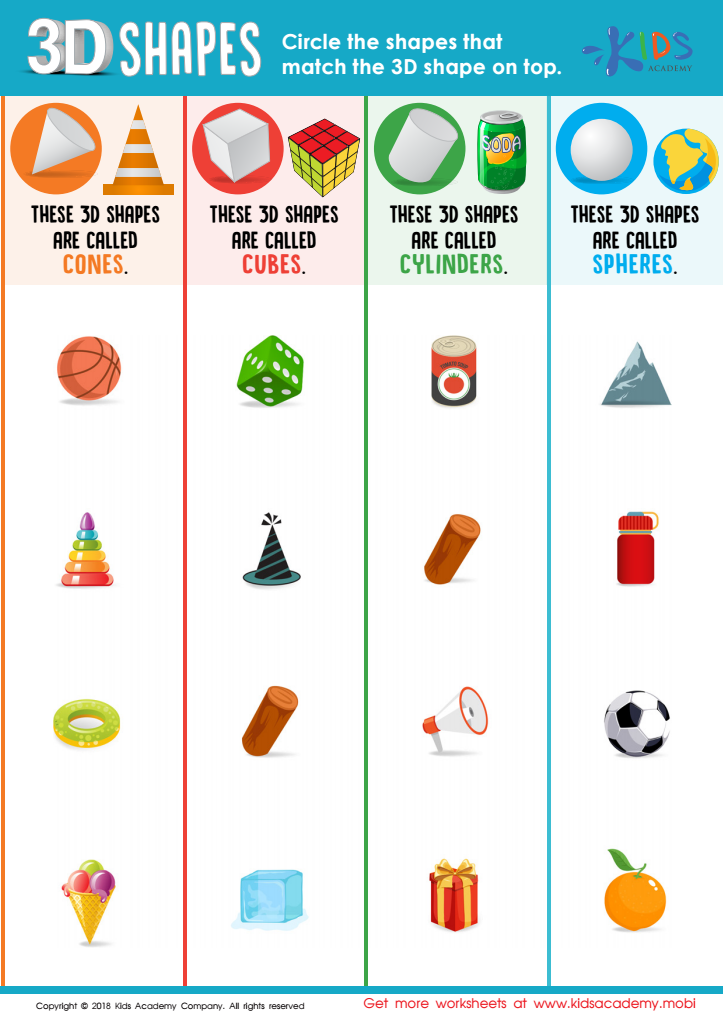Matching shapes Worksheets for Kids
1 filtered results
-
From - To


3D Shapes Worksheet
Question/Answer
How does the mastery of the Matching shapes skill affect a student's performance at an early age?
Mastery of the matching shapes skill at an early age significantly enhances a student's visual-spatial understanding, critical thinking, and problem-solving abilities. It lays a foundational cognitive skill set essential for academic success in areas such as math, reading, and sciences, by improving their ability to recognize patterns, categorize objects, and understand relationships between different entities.
What are some effective activities to train students’ Matching shapes skill when teaching them about Geometry?
Effective activities for training students' matching shapes skills in Geometry include using tangrams, playing shape matching games, utilizing interactive online geometry software, engaging in sorting and classifying shapes activities, completing puzzles that require recognizing geometric shapes, and incorporating arts and crafts projects that involve creating and identifying shapes. These hands-on activities bolster understanding and retention of geometric concepts.
How to train the Matching shapes skill in Kindergarten students learning about Geometry?
To train the Matching Shapes skill in Kindergarten students, engage them in hands-on activities such as using flashcards with geometric shapes, shape sorting games, and puzzles. Incorporate digital apps designed for shape matching to enhance interactive learning. Also, employ everyday objects to encourage students to identify and match shapes in their environment, reinforcing real-world connections to geometric concepts.
 Assign to the classroom
Assign to the classroom










